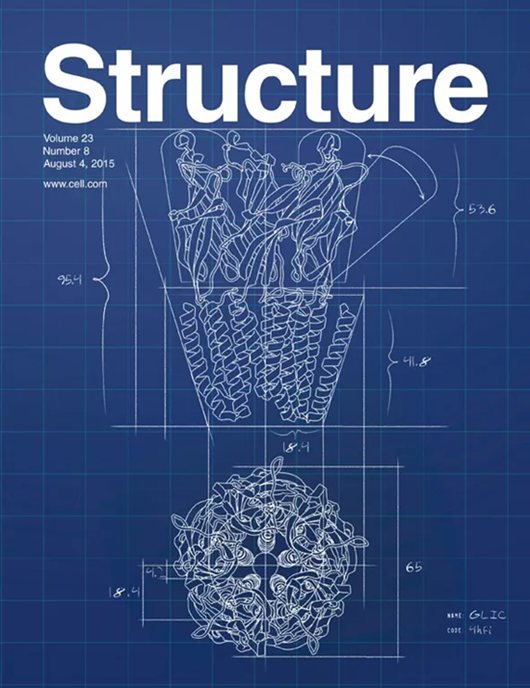Structure of a putative terminal amidation domain in natural product biosynthesis
IF 4.4
2区 生物学
Q2 BIOCHEMISTRY & MOLECULAR BIOLOGY
引用次数: 0
Abstract
Bacteria are rich sources of pharmaceutically valuable natural products, many crafted by modular polyketide synthases (PKS) and non-ribosomal peptide synthetases (NRPS). PKS and NRPS systems typically contain a thioesterase (TE) to offload a linear or cyclized product from a carrier protein, but alternative chemistry is needed for products with a terminal amide. Several pathways with amidated products also possess an uncharacterized 400-amino acid terminal domain. We present the characterization and structure of this putative terminal amidation domain (TAD). TAD binds NAD with the nicotinamide near an invariant cysteine that is also accessible to an intermediate on a carrier protein, indicating a catalytic role. The TAD structure resembles cyanobacterial acyl-ACP reductase (AAR), which binds NADPH near an analogous catalytic cysteine. Bioinformatic analysis reveals that TADs are broadly distributed across bacterial phyla and often occur at the end of terminal NRPS modules, suggesting many amidated products may yet be discovered.

求助全文
约1分钟内获得全文
求助全文
来源期刊

Structure
生物-生化与分子生物学
CiteScore
8.90
自引率
1.80%
发文量
155
审稿时长
3-8 weeks
期刊介绍:
Structure aims to publish papers of exceptional interest in the field of structural biology. The journal strives to be essential reading for structural biologists, as well as biologists and biochemists that are interested in macromolecular structure and function. Structure strongly encourages the submission of manuscripts that present structural and molecular insights into biological function and mechanism. Other reports that address fundamental questions in structural biology, such as structure-based examinations of protein evolution, folding, and/or design, will also be considered. We will consider the application of any method, experimental or computational, at high or low resolution, to conduct structural investigations, as long as the method is appropriate for the biological, functional, and mechanistic question(s) being addressed. Likewise, reports describing single-molecule analysis of biological mechanisms are welcome.
In general, the editors encourage submission of experimental structural studies that are enriched by an analysis of structure-activity relationships and will not consider studies that solely report structural information unless the structure or analysis is of exceptional and broad interest. Studies reporting only homology models, de novo models, or molecular dynamics simulations are also discouraged unless the models are informed by or validated by novel experimental data; rationalization of a large body of existing experimental evidence and making testable predictions based on a model or simulation is often not considered sufficient.
 求助内容:
求助内容: 应助结果提醒方式:
应助结果提醒方式:


